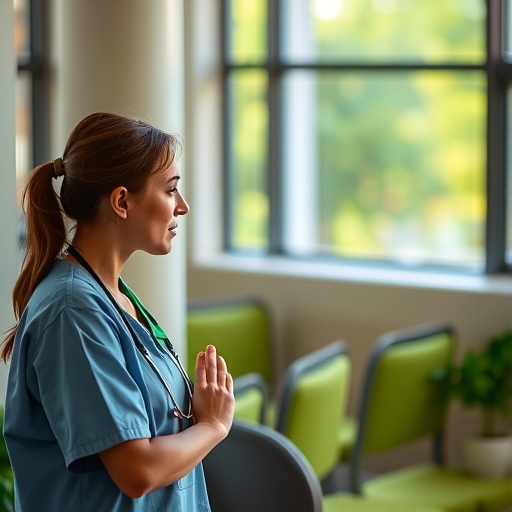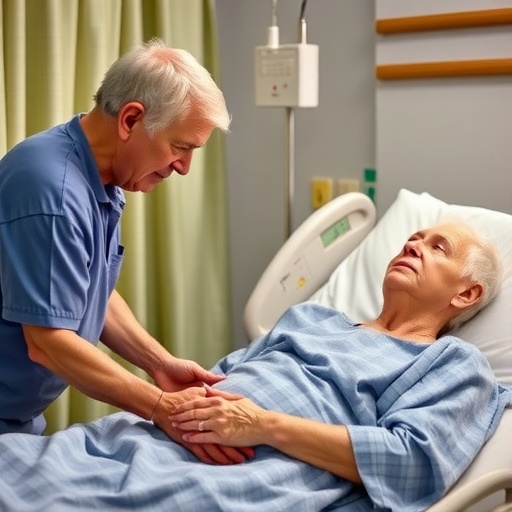Only about 16 percent of U.S. adolescents have been fully vaccinated against human papillomavirus (HPV) by the time they turn 13, despite national recommendations that call for vaccination at 11 to 12 years of age. Published in the Journal of Infectious Diseases, the new findings highlight the need for stronger efforts to encourage HPV vaccination and to improve immunization rates in this key age group.
“Providers need to be aware that, while we have seen gains in HPV vaccination coverage, we are still falling behind at the younger ages,” says Robert A. Bednarczyk, PhD, of Emory University’s Rollins School of Public Health and lead author of the study. “In general, we need to do a better job of recommending the HPV vaccine at the routine, adolescent, and well-child visits, with a particular focus on 11 to 12 years of age.”
Nearly 80 million people in the U.S. are currently infected with some type of HPV, a common virus transmitted through sexual contact. Every year, HPV causes approximately 34,000 cancers, including cervical, vaginal, and vulvar cancer in women; penile cancer in men; and mouth, throat, and anal cancer in women and men. The most recent version of the vaccine protects against seven of the most common types of HPV that cause cancer.
For the study, researchers analyzed 2016 data from a nationwide survey of parents conducted annually by the Centers for Disease Control and Prevention that includes vaccination information verified by providers. Overall, an estimated 43.4 percent of 13-to-17-year-olds were fully vaccinated against HPV. But only 15.8 percent of adolescents had received all recommended HPV vaccine doses by their 13th birthday, the analysis found. Among older teens, an estimated 34.8 percent of teens were up-to-date on their HPV vaccination by the time they turned 15.
Timely HPV vaccination at 11 to 12 years of age has several advantages. The immune response to the vaccine is stronger at a younger age, providing better protection against HPV infections and the cancers they can cause later in life. If an adolescent is vaccinated before age 15, only two doses of the HPV vaccine are required, instead of the three doses that are recommended for vaccination after this age. In addition, the HPV vaccine is one of three vaccines recommended for 11-to-12-year-olds that can be given at the same time. (The tetanus, diphtheria, and acellular pertussis [Tdap] vaccine and the meningococcal conjugate vaccine are the other recommended immunizations at these ages.)
The new analysis also found that adolescents with more than one health care provider were not as likely to be up to date on their HPV vaccination by age 13 or 15. These results highlight the need for good record keeping, effective use of state immunization information systems, and increased provider awareness to make sure these patients are not overlooked when considering vaccination opportunities, Bednarczyk says.
In a related editorial commentary, Melissa B. Gilkey, PhD, and Marjorie A. Margolis, MPSH, both of the University of North Carolina at Chapel Hill, and who were not involved with the new study, noted that the results indicate much work remains to achieve HPV vaccination rates in line with current U.S. guidelines.
“Fully realizing the potential of HPV vaccination will require a multi-faceted effort involving scalable health systems interventions, a greater understanding of geographic disparities in HPV vaccination coverage, and improved data on HPV vaccination,” they wrote in their commentary, which appears with the study in the Journal of Infectious Diseases. As the findings show, they noted, “vaccination timeliness is critically low and our work is far from complete.”
###
Fast Facts
- Human papillomavirus (HPV) is a common virus transmitted through sexual contact. HPV can cause several types of cancer in women and men.
- Only about 16 percent of U.S. adolescents have been fully vaccinated against HPV by the time they turn 13, despite national recommendations calling for vaccination at 11 to 12 years of age.
- Completing HPV vaccination by age 13 compared to later has several advantages, including a stronger immune response to the vaccine, providing better protection against HPV infections and the cancers they can cause.
Editor’s note: The study was funded by the National Institute of Allergy and Infectious Diseases. The study authors’ and editorial commentary authors’ affiliations, acknowledgments, and disclosures of financial support and potential conflicts of interests, if any, are available in the study and the commentary, which are embargoed until 12:05 a.m. ET on Thursday, Jan. 17. For an embargoed copy of the study and the commentary, please contact Samantha Guckenberger (312-558-1770, [email protected]).
Published continuously since 1904, the Journal of Infectious Diseases is the premier global journal for original research on infectious diseases. The editors welcome major articles and brief reports describing research results on microbiology, immunology, epidemiology, and related disciplines, on the pathogenesis, diagnosis, and treatment of infectious diseases; on the microbes that cause them; and on disorders of host immune responses. The journal is an official publication of the Infectious Diseases Society of America (IDSA). Based in Arlington, Va., IDSA is a professional society representing more than 11,000 physicians and scientists who specialize in infectious diseases. For more information, visit http://www.
Media Contact
Samantha Guckenberger
[email protected]
312-558-1770




